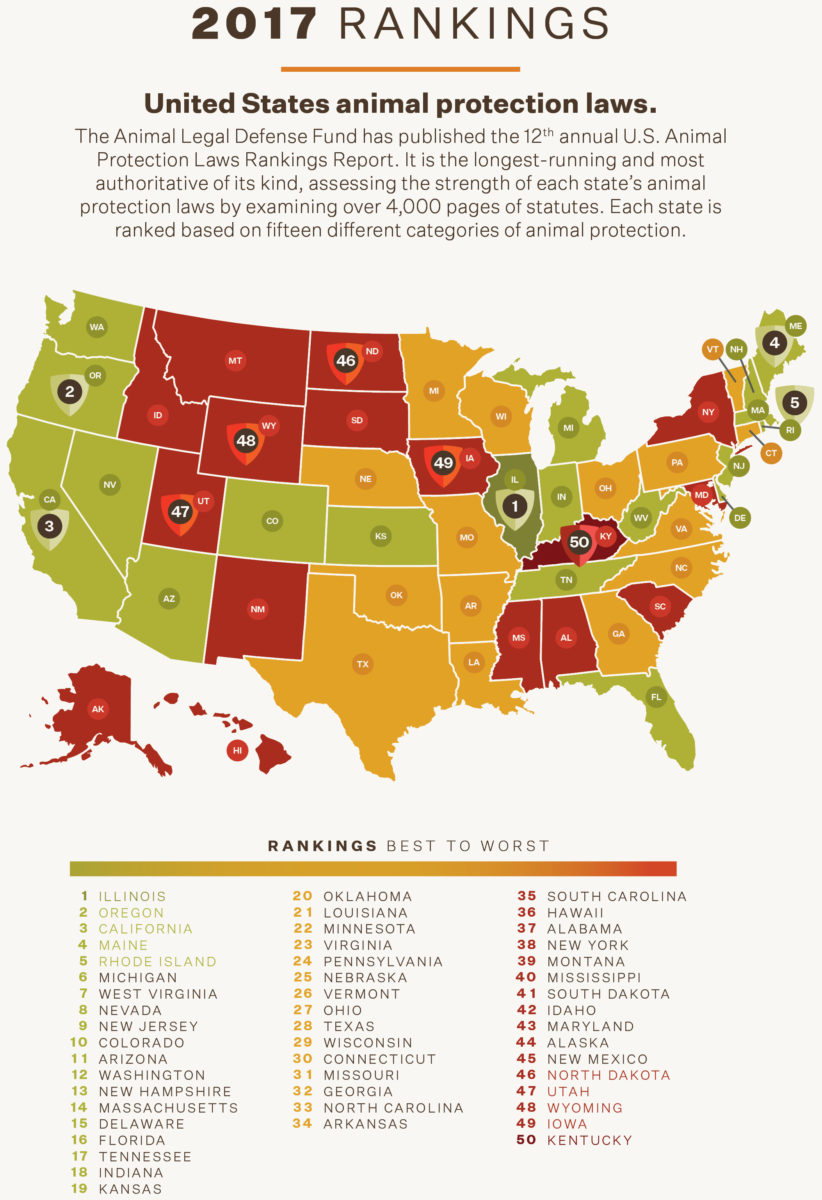Animal cruelty remains an unsettling reality across many societies, yet the legal repercussions for such offenses vary widely from state to state. Understanding the consequences for animal cruelty in your state is crucial not only for potential offenders but also for vigilant citizens and activists aiming to cultivate a more humane society.
The fundamental premise underpinning laws against animal cruelty is the recognition of animals as sentient beings deserving of protection. In a significant number of states, statutes explicitly categorizing acts of cruelty illustrate this altruistic motivation. However, these laws tend to differ greatly, ranging from misdemeanors to felonies based on the severity of the offense. Some states may impose harsher penalties for egregious acts, while others maintain lenient sentences for lesser infractions.
Primarily, the consequences can be delineated into two main categories: criminal and civil penalties. Criminal repercussions typically encompass fines, imprisonment, and community service. In contrast, civil penalties might involve restitution to the animal’s owner or the state if the animal was not owned. The influence of public sentiment also plays a substantial role in shaping these legal frameworks, as societal attitudes toward animal welfare evolve.
Firstly, consider the criminal penalties associated with animal cruelty. A plethora of states classify animal cruelty predominantly as a felony when it entails severe physical harm or the intentional killing of an animal. In states like Colorado and Illinois, convictions can lead to imprisonment periods ranging from one to three years for felony charges, alongside hefty fines. In contrast, states like North Carolina may view first-time offenses more leniently, often resulting in a misdemeanor charge with minimal punishment if no severe damage occurred.
Additionally, numerous states incorporate specific aggravating factors that could elevate the penalties further. For instance, repeat offenders, individuals with previous charges, or those who utilize cruelty as a means of intimidation may face enhanced sentences. Jurisdictions may recognize the despised pattern of behavior that demonstrates an individual’s propensity for violence, allowing them to impose stricter repercussions.
Aside from criminal penalties, the implications of a conviction may extend to the civil realm. Notably, civil liability for animal cruelty can manifest in various forms, such as mandated restitution for veterinary expenses incurred due to the abuse or even the full replacement cost of an animal lost due to neglect or maltreatment. This civil dimension not only serves to compensate the victim but also acts as a deterrent for potential offenders who may underestimate the financial ramifications of their actions.
In discussing the civil consequences, one cannot ignore the role of animal welfare organizations and their advocacy efforts which scrutinize local and state laws. By educating the public on the ramifications of animal cruelty, these organizations empower citizens to speak out against injustice, motivating lawmakers to introduce or strengthen legislation. Grassroots movements often emerge when communities band together to promote stronger laws against animal cruelty. For example, the push for stricter penalties often leads to widespread public discourse, indicating that cruelty not only affects the immediate victims but also has rippling effects on the community at large.
However, there remains a significant disparity in enforcement and prosecution across different states. Certain areas may lack sufficient resources for animal control, leading to fewer investigations or prosecutions despite widespread incidents of cruelty. Furthermore, cultural perspectives towards animals can influence the level of empathy and urgency amongst lawmakers and law enforcement. In rural areas, for instance, there may be a traditional view of animals as property, which can dampen the immediate recognition of their needs as sentient beings requiring protection.
In examining state-specific legislation, it is salient to address the nuances within broader legal frameworks. Some states, like Oregon and California, have enacted “ag-gag” laws aimed at repressing the exposure of cruelty on farms. These laws complicate the landscape further, establishing barriers to whistleblowing and hindering efforts to document and report instances of animal abuse.
Moreover, emerging trends highlight a growing acknowledgment of the psychological complexities connected to animal cruelty. Recent research indicates a correlation between animal abuse and domestic violence or other criminal behaviors. As a consequence, some jurisdictions have begun to incorporate mental health evaluations and counseling as part of the penalty for offenders, recognizing that addressing underlying psychological issues may prevent recidivism.
In conclusion, the consequences of animal cruelty vary considerably across states, entailing an intricate tapestry of legal ramifications encompassing both criminal and civil sectors. The disparities often reflect societal attitudes towards animals and the perceived seriousness of violence against them. While some states impose stringent penalties, others remain considerably lenient, potentially allowing a culture of cruelty to persist. Advocates continue to work tirelessly, striving for uniformity and compassion in legislation aimed at protecting the most vulnerable among us: our animal companions. The intricate dynamics of animal cruelty laws underscore the need for continuous dialogue, legislative reform, and increased public awareness to foster a more humane society for all living beings.










